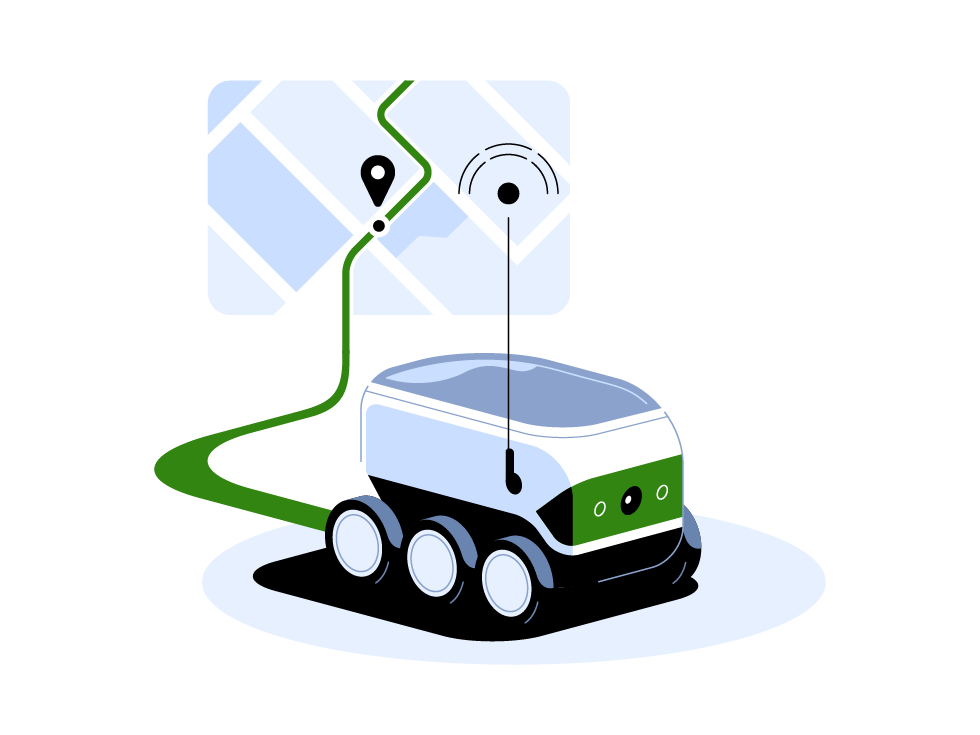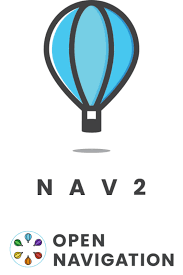Navigation for Mobile Robots
What is Navigation?
Navigation is the process that enables a robot to move from one point to another in a known or unknown environment. It is essential for autonomous mobile robots that need to perform tasks such as transporting objects, exploring new areas, or interacting with dynamic surroundings.

Why Do We Need a Navigation System?
Mobile robots require a reliable navigation system to understand their environment, plan their movements, and avoid obstacles. While many basic robotics concepts like sensor integration and control can be handled by frameworks such as ROS, navigation is a complex process that involves more than just moving the robot forward.
How Does Navigation Work?
To successfully implement navigation, several core components work together:
- Mapping: The robot creates or accesses a map of the environment.
- Localization: The robot determines its current position on the map.
- Path Planning: The robot calculates an optimal path from its current location to the destination.
- Obstacle Avoidance: The robot continuously monitors its environment to detect and avoid obstacles while following the planned path.
The ultimate goal of any navigation system is to allow the robot to move safely and efficiently from Point A to Point B without colliding with people, objects, or other robots.
The Navigation 2 Stack (Nav2)
What is Nav2?
Nav2 (Navigation 2) is the navigation stack developed for ROS 2 (Robot Operating System 2). It is the evolution of the original navigation stack designed for ROS 1, and it provides the necessary tools and packages for autonomous navigation in mobile robots.

Why Do We Need Nav2?
As navigation is not trivial to implement from scratch, Nav2 was developed to make it easier for roboticists to implement safe and efficient navigation. Nav2 provides an integrated solution for moving a robot from one point to another, handling the complex aspects of:
- Localization
- Path planning
- Control
- Obstacle avoidance
By using Nav2, developers can leverage a collection of pre-built tools and libraries instead of building their own navigation systems from the ground up. Nav2 is built on ROS 2, benefiting from improved performance, scalability, and modularity.
How Does Nav2 Work?
Nav2 uses sensor data (such as LIDAR, cameras, or depth sensors) to create maps, localize the robot, and plan a safe path through the environment. Its key components include:
- Localization: Nav2 supports several localization methods, such as AMCL (Adaptive Monte Carlo Localization), to determine the robot's position.
- Planner: The planner module computes the best path for the robot to follow to reach its goal while avoiding obstacles.
- Controller: This component ensures that the robot follows the planned path accurately by controlling the robot's actuators.
- Recovery Behaviors: If the robot gets stuck or encounters an obstacle, Nav2 includes predefined recovery behaviors to help it get back on track.
Main Goal of Nav2
The primary goal of Nav2 is to ensure that a mobile robot can navigate from point A to point B autonomously, safely, and efficiently. This includes path planning, obstacle avoidance, and real-time monitoring of the robot's environment to dynamically adjust its path if necessary.
Key Features of Nav2:
- Modularity: Nav2 is highly modular, allowing developers to use only the components they need or swap out modules with custom implementations.
- ROS 2 Integration: Nav2 takes advantage of ROS 2's features such as real-time capabilities, distributed systems, and improved communication performance.
- Safety: Nav2 is designed to ensure the robot's movement is safe, avoiding collisions with static and dynamic obstacles.
- Scalability: It can scale for use in large environments with multiple robots.
Conclusion
A robust navigation system is crucial for any mobile robot to function autonomously. Nav2 simplifies the development of navigation systems by providing a comprehensive, modular framework that handles mapping, localization, path planning, and obstacle avoidance. With Nav2, roboticists can focus more on the specific tasks their robots need to perform, rather than the low-level details of navigation.